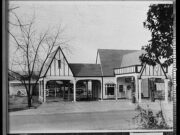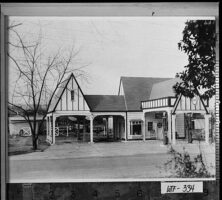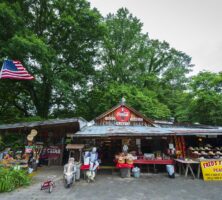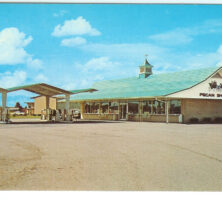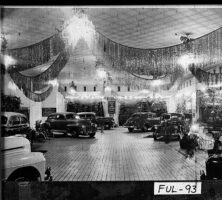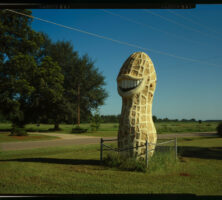Roadside architecture consists of the various structures built to serve the motoring public. Generally associated with twentieth-century road development, the main types of roadscape resources are restaurants, automobile showrooms, recreation and amusement facilities, stores, specialized buildings and artifacts, overnight accommodations, and gas stations. In its early stages, roadside architecture was vernacular in form, but with advancing technology and the franchising of businesses, the buildings became standardized and therefore easily recognized by patrons.
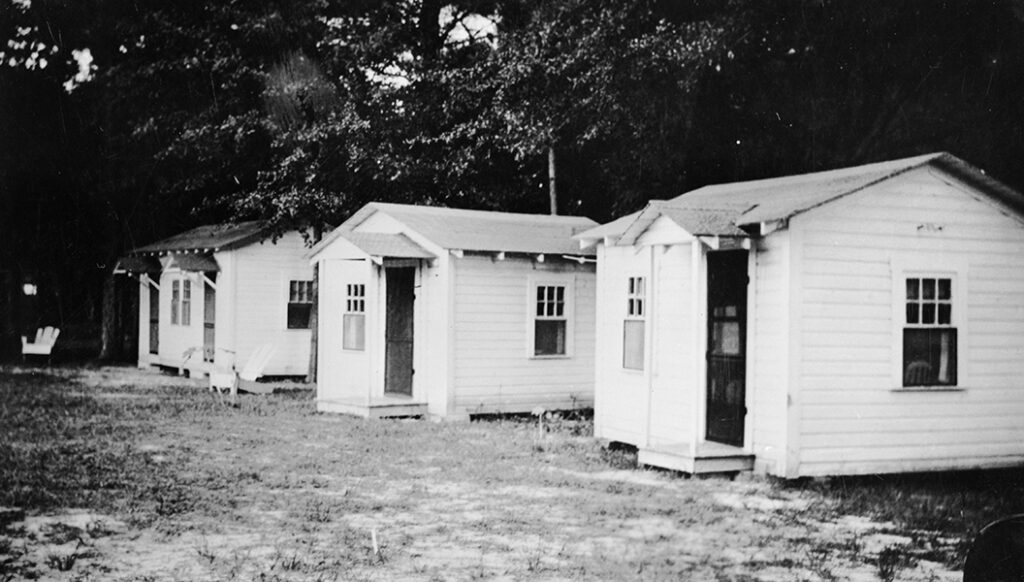
Courtesy of Georgia Archives.
In Georgia, as elsewhere in the South, the forms and stylistic elements of the early historic resources were simpler, built by local craftspeople, and constructed of native materials. This trend continued through the middle of the twentieth century, especially in less-populated areas. Two examples of such architecture are the 1930s wood-framed A. J. White Service Station outside of Acworth and the Dixie Motel (date unknown), a tourist court built from stone quarried in north Georgia located just north of Ringgold on the old Dixie Highway (U.S. 41). Down the road in Ringgold is the Chowtime Drive-In, a diner (circa 1955) still in operation with a working neon sign. While northern early-twentieth-century highways are known for their sometimes elaborate diners with sleek, metallic appearances, such eateries are rare in the South. However, Roy’s Grill (1949) in Rossville is a rare and excellent exception with its classic art deco appearance.
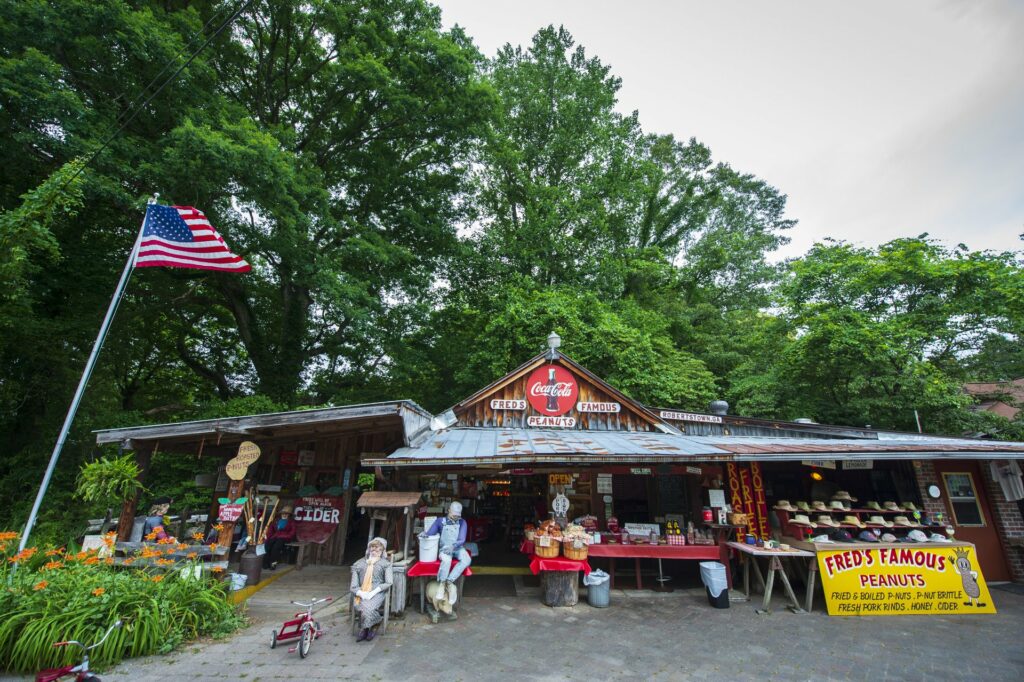
Courtesy of Explore Georgia.
As the home of several early interstate highways, including both the eastern and western branches of the Dixie Highway, the National Highway, and the Bankhead Highway, Georgia had its share of franchised businesses that used standardized architectural plans. One was the Pure Oil Company. Self-trained architect Carl Petersen designed the Pure Oil station, with its steeply pitched blue roof, to look like an English cottage. These easily identifiable stations, built in the late 1920s and early 1930s, can be found near the downtowns of Calhoun, Cartersville, Hartwell, Fort Gaines, Atlanta, and other cities across the state. Another distinctively designed national chain was the Alamo Plaza Hotel Court, designed in the Spanish mission style. Complete with smooth, white-painted stucco walls and rounded false parapet roofs, these overnight accommodations built in the 1940s were found in Atlanta and Savannah.
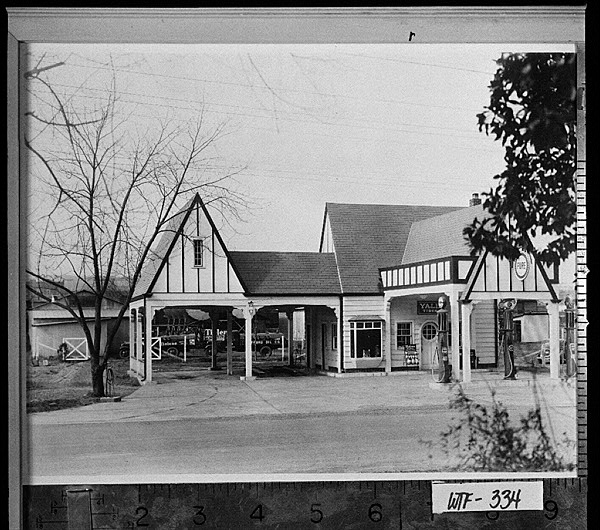
Courtesy of Georgia Archives.
Georgia also produced native roadside entrepreneurs. In the early 1930s, Williamson S. Stuckey Sr. opened a pecan stand in Eastman and eventually expanded to restaurants, motels, and stores selling candy, souvenirs, and gas. By the 1970s Stuckey’s stores were all over the country and often recognized by their “house with canopy” form and teal-colored roofs. Truett Cathy began the now famous red-and-white Chick-fil-A restaurants in 1946 with the Dwarf Grill in Hapeville; in 1967 he opened the first Chick-fil-A in the Greenbriar Shopping Center in Atlanta. In 1955 Joe Rogers and Tom Forkner opened the first Waffle House restaurant in Avondale Estates. Considered a southern institution by many, more than 1,400 freestanding yellow-and-black Waffle Houses are now found in 25 states.
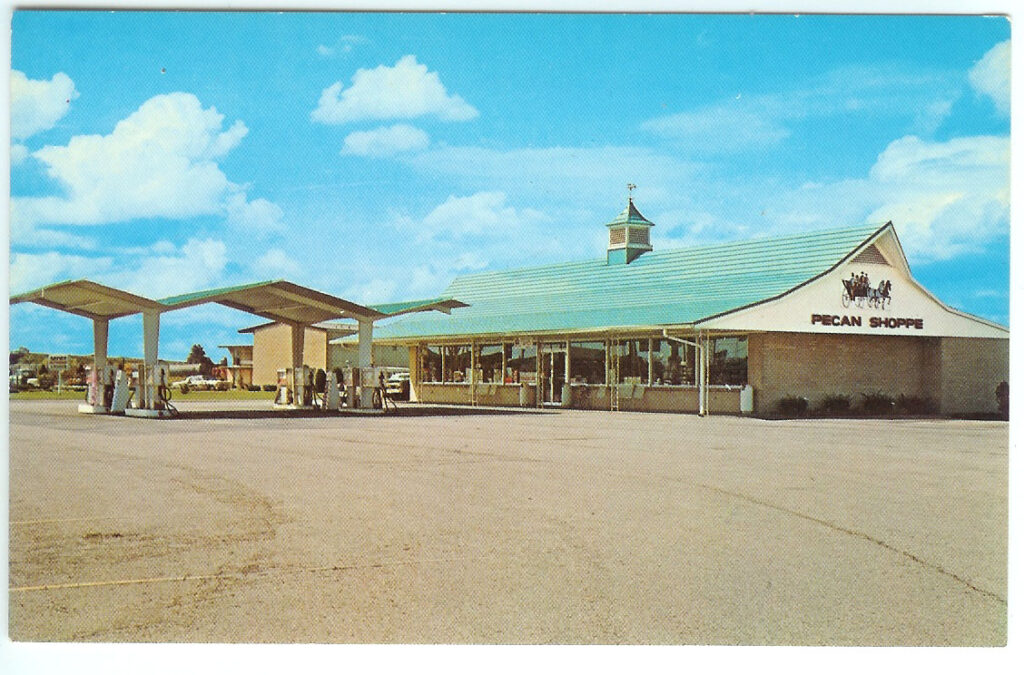
Courtesy of Stuckey's Corporation
Once prolific in cities across the state, the drive-in movie theater in Georgia is now a rare relic reminiscent of mid-twentieth-century entertainment. These roadside artifacts are easily recognized by their large signage (often neon), marquee, office and refreshment building, parking area, and mammoth screens on which the movies are shown. The Atlanta Starlight Six Drive-In, the Blue Ridge Swan Drive-In, the Jesup Drive-In Theatre, and the Tiger Drive-in Theatre are several that have remained in operation. In 2001 the Woodall Estate in Elbert County opened the Highway 17 Theatre, a drive-in assembled on the estate grounds with equipment salvaged from thirty-seven older drive-ins previously owned and operated in the surrounding area by the Woodall family.
Originally built on the edge of downtowns, automobile showrooms have since the 1950s been built on major roads or “strips” heading out of town. Both the early showrooms, such as the 1920s Vidalia Chevrolet dealership, whose brick rectangular building mimics the other commercial block buildings in town, and the later ones, such as the 1960s Marietta Big Dodge Dome with its 360-degree showroom, are identified by their large windows and open interior spaces. An outstanding 1930s showroom is the Atlanta Freeman Ford Building. Designed by architect G. Lloyd Preacher, this art deco style building has been converted into loft apartments that retain the elaborate cornice detailing and evidence of the car ramps on the interior.
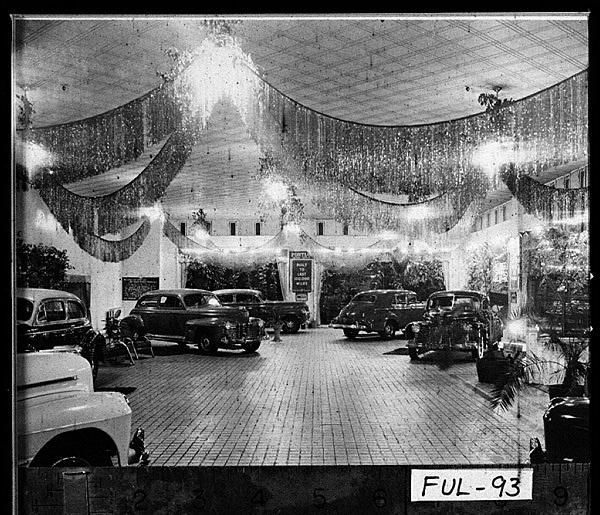
Courtesy of Georgia Archives.
More specialized roadside structures include the north Georgia painted “See Rock City” barns; the Big Peanut in Ashburn, the home of the world’s largest peanut-processing plant; and the Plains Smiling Peanut in Plains, the hometown of U.S. president and peanut farmer Jimmy Carter. Historic wood and steel bridges of all types, highway markers and monuments, bypassed roadbeds, neon and handcrafted signs, and other artifacts document the early development of Georgia’s roads and highways. While gasoline alleys and family-owned tourist courts and gas stations have been replaced by ubiquitous travel centers, strip malls, and chain restaurants, these new roadside constructions continue the tradition of catering to the automobile traveler in Georgia with a constant upgrading to newer, more homogeneous, and more modern buildings. Over time these newer structures create a less distinctive but still eye-catching roadside environment.


